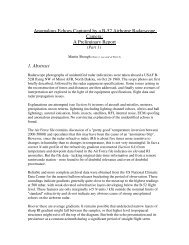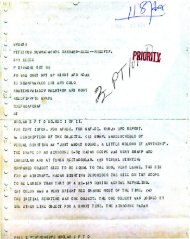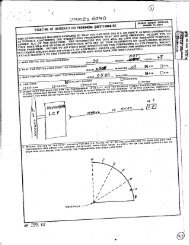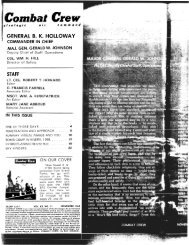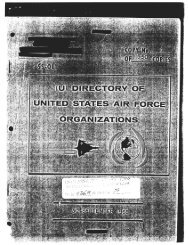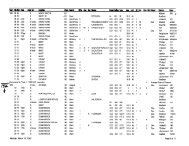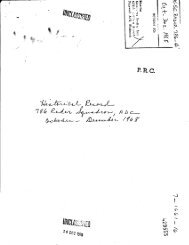TACTICAL AIR NAVIGATION (TACAN) - GlobalSecurity.org
TACTICAL AIR NAVIGATION (TACAN) - GlobalSecurity.org
TACTICAL AIR NAVIGATION (TACAN) - GlobalSecurity.org
Create successful ePaper yourself
Turn your PDF publications into a flip-book with our unique Google optimized e-Paper software.
It may be mounted in its own cabinet or in a standard<br />
19-inch rack.<br />
To increase the channels available, the <strong>TACAN</strong> set<br />
can be operated in either the X or Y mode. The Y<br />
mode changes the pulse pair spacing and the auxiliary<br />
burst count and spacing, and increases system delay.<br />
ANTENNA GROUP OE-273(V)/URN<br />
Shown in figure 2-8, the Antenna Group OE-<br />
273/URN is a solid-state, high-performance,<br />
electronically-scanned, all-band <strong>TACAN</strong> antenna<br />
system, complete with integral monitoring system and<br />
built-in fault isolation capability. The antenna group<br />
develops the coarse and fine bearing modulations<br />
electronically.<br />
Rather than forming the <strong>TACAN</strong> radiation pattern<br />
by the old mechanical rotation method, the AS-3240<br />
achieves the same effect by digital switching of<br />
parasitic elements arranged in concentric arrays<br />
around the central radiator. Twelve inner elements<br />
provide the 15-Hz modulation (replacing the singlephase<br />
rotating parasitic element in the mechanically<br />
rotated antenna), and 32 outer elements provide the<br />
135-Hz modulation (replacing the nine outer elements<br />
of the rotated antenna). The 15- and 135-Hz<br />
modulation pattern is provided by electronically<br />
switching the diodes in each of the parasitic elements<br />
in prescribed time sequence, which is repeated once in<br />
each 15-Hz interval.<br />
In effect, the elements are rotated electrically,<br />
rather than mechanically. An advantage this provides<br />
is the elimination of the bandwidth limitations inherent<br />
in the old mechanically-rotated antennas. In the<br />
electronically-scanned antenna, the appropriate ring<br />
for a given frequency segment is activated by a fast<br />
electronic switch, based on information from the<br />
<strong>TACAN</strong> frequency synthesizer. This allows<br />
instantaneous band switching and all-band operation.<br />
Figure 2-8.—Antenna Group OE-273(V)/URN.<br />
2-7



